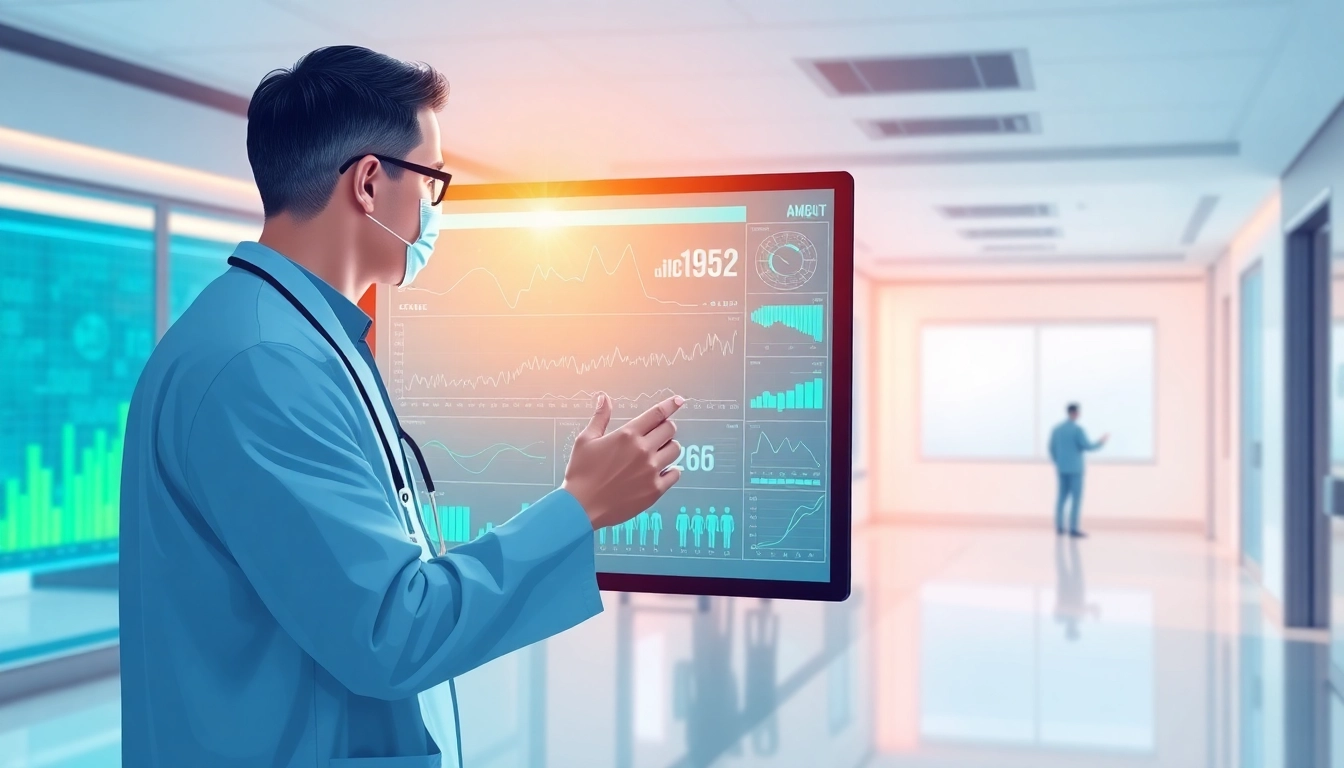Understanding the Core of Informatics
What is Informatics?
Informatics is a comprehensive field that blends computing technology with data analysis, focusing on the systematic organization and application of data to improve decision-making processes. At its core, informatics encompasses the collection, storage, retrieval, and use of information. It can be seen as the science of how to use data, information, and knowledge to enhance human health, particularly in the realm of healthcare. By interpreting various data types, from clinical notes to lab results, informatics empowers healthcare professionals to make informed decisions that lead to improved patient outcomes.
The Role of Technology in Healthcare
In recent years, technology has revolutionized how healthcare is delivered and managed. Technologies such as Electronic Health Records (EHRs), telemedicine, and mobile health applications have created a more interconnected healthcare system. These technological advancements facilitate better communication between healthcare providers, offer patients more control over their health data, and streamline administrative processes. For instance, EHRs not only electronically store patient data but also enable healthcare providers to access patient histories swiftly, thus promoting efficient care delivery.
Key Principles of Health Informatics
Health informatics is underpinned by several key principles that guide its practice and implementation. One primary principle is interoperability, which refers to the ability of different systems and organizations to work together and exchange health information seamlessly. Ensuring data accuracy and security is another essential principle, as sensitive patient information must be protected from unauthorized access. Finally, a focus on user-centered design ensures that technological solutions are tailored to the needs and workflow of healthcare professionals, fostering efficient use.
Applications of Informatics in Healthcare
Case Studies of Success
Numerous case studies illustrate the transformative impact of informatics within healthcare settings. For example, in a study conducted at a large hospital network, the implementation of EHRs resulted in a 30% reduction in medication errors, significantly improving patient safety. Similarly, a remote patient monitoring program for chronic disease management has shown a 40% decrease in hospital readmission rates, exemplifying how technology can support proactive care.
The Impact of EHRs on Patient Management
Electronic Health Records are one of the most significant innovations in health informatics. They enhance patient management by centralizing patient data in a single digital format accessible to authorized health professionals. This accessibility supports better treatment planning and coordination among specialists, leading to more holistic patient care. Moreover, EHRs often include clinical decision support tools that alert providers to potential drug interactions or suggest evidence-based treatment protocols.
Emerging Technologies in Health Informatics
The field of health informatics is continually evolving, with exciting technologies on the horizon. Artificial intelligence (AI) and machine learning are poised to play significant roles by analyzing large datasets to identify patterns and predict patient outcomes. Blockchain technology also presents opportunities for secure and transparent health data exchange, while wearable devices enable real-time health monitoring, further enhancing patient engagement in their health management.
Challenges in Implementing Informatics Solutions
Data Security and Privacy Concerns
While the benefits of informatics solutions are vast, challenges such as data security and privacy concerns are paramount. Healthcare organizations store sensitive patient information, making them attractive targets for cyberattacks. Implementing robust cybersecurity measures, including encryption and access controls, is essential to protecting patient data. Furthermore, organizations must comply with regulations such as HIPAA, which dictate strict rules for patient information handling.
Overcoming Technical Barriers
Technical barriers can impede the successful implementation of informatics solutions. Healthcare providers may encounter outdated systems that are incompatible with new technologies. To overcome such challenges, organizations should conduct thorough assessments of their existing IT infrastructure and invest in upgrades that support current and future informatics needs. Collaboration with IT specialists can also ensure a smoother transition to new systems.
Workforce Training and Development
The successful integration of informatics within healthcare requires a workforce that is well-trained in using these technologies. This necessitates investment in ongoing training and development programs tailored to different roles within the organization. Institutions can prioritize training initiatives that familiarize staff with new systems, tools, and understanding best data practices to maximize the benefits of informatics.
Best Practices for Informatics Integration
Choosing the Right Software for Your Needs
Selecting the appropriate informatics software is a critical step in successful implementation. Organizations should assess their specific needs, scalability requirements, and the user-friendliness of the software. Involving end users in the selection process can result in products tailored to the actual workflows of healthcare professionals, enhancing overall satisfaction and efficacy.
Engaging Stakeholders Effectively
Effective stakeholder engagement is crucial for successful informatics integration. Key stakeholders, including healthcare providers, administrative staff, and even patients, should have opportunities to provide input during the planning and implementation phases. This collaborative approach fosters buy-in and minimizes resistance to new technologies, resulting in more successful adoption rates.
Measuring the Impact of Informatics on Care
To evaluate the effectiveness of informatics solutions, organizations must establish clear metrics and performance indicators. These may include patient satisfaction scores, readmission rates, or time saved in administrative tasks. Regular assessments of these metrics will inform necessary adjustments and improvements, ensuring continuous quality enhancement in healthcare delivery.
The Future of Health Informatics
Trends Shaping Healthcare Technology
The future of health informatics is undeniably influenced by emerging trends in healthcare technology. Telehealth is expected to become mainstream, providing accessibility to patients regardless of location. Personal Health Records (PHRs) will also see increased usage as patients take charge of their health data. Finally, the increasing integration of AI and data analytics in clinical decision-making will pave the way for precision medicine, where treatments are tailored to individual patient profiles.
Predictions for the Next Decade
Looking ahead, the role of informatics in healthcare will expand significantly. As interoperability becomes more established across systems, healthcare providers will enjoy seamless access to comprehensive patient data, facilitating improved collaboration. Furthermore, augmented reality (AR) and virtual reality (VR) have the potential to enhance medical training and patient education. These developments will ultimately lead to better-informed healthcare decisions and enhanced patient care experiences.
How informaticsview.com Can Help You Stay Ahead
For professionals looking to stay at the forefront of the rapidly evolving field of health informatics, informaticsview.com serves as a valuable resource. By providing insights into emerging technologies, best practices, and expert opinions, this platform enables healthcare professionals to leverage informatics for enhanced patient care and operational efficiency.



